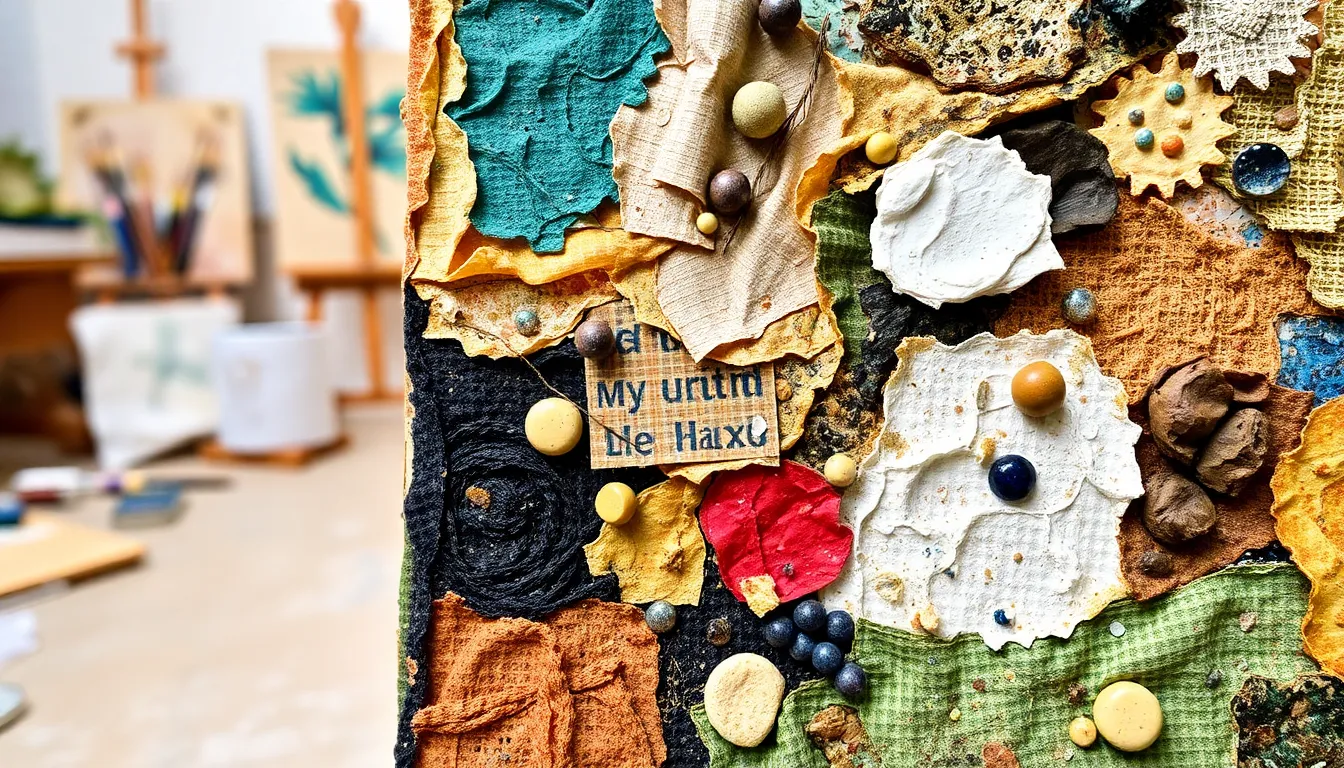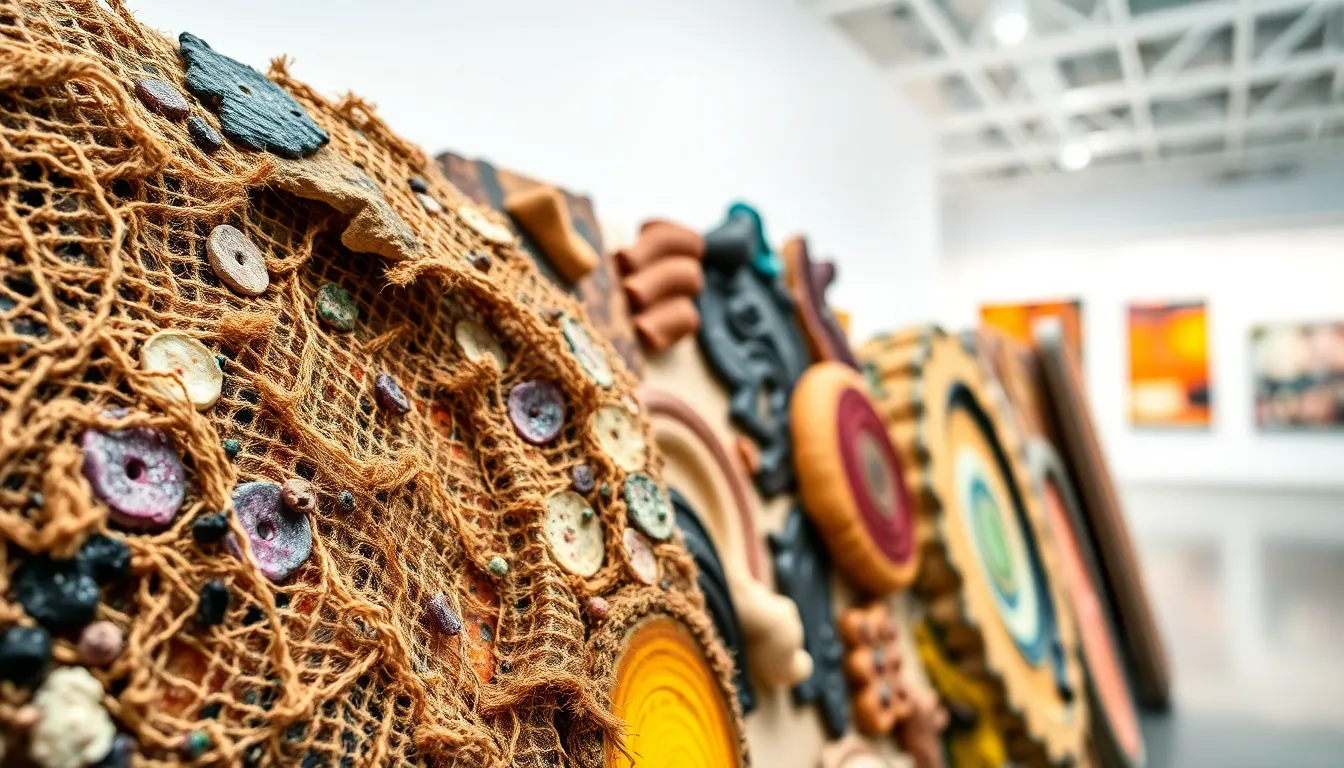Phone:
(701)814-6992
Physical address:
6296 Donnelly Plaza
Ratkeville, Bahamas.

Dive into the vibrant world of textured art, where creativity knows no bounds and every stroke tells a story. Imagine transforming ordinary materials into extraordinary masterpieces that not only catch the eye but also invite touch. Whether it’s a canvas bursting with layers or a quirky sculpture made from recycled treasures, textured art adds a delightful twist to any space.
Textured art focuses on tactile experiences and visual interest by incorporating varying surface qualities. Artists use diverse materials such as fabric, paper, and natural elements to create intricate designs that invite interaction. Various techniques, like layering, sculpting, or collaging, enhance the artwork’s depth and dimension.
The combination of color and texture offers viewers a multisensory experience, often evoking strong emotions. Instead of flat, traditional paintings, textured art engages individuals by challenging expectations. Every piece can embody a narrative, reflecting the artist’s thoughts and feelings through material choices and manipulation.
In addition to traditional mediums, artists explore unconventional items, turning discarded materials into stunning masterpieces. Recycled objects provide unique textures and contribute to a sustainable approach in art. This innovation encourages creativity, resulting in art that not only captivates but also promotes environmental awareness.
Textures can range from smooth to rough, subtle to bold. In creating a textured artwork, the choice of materials plays a crucial role in the final presentation. An artist might mix sand, fabric, and paint to produce a rugged landscape or use glass and metal for a sleek, modern piece.
Textured art invites participation. Viewers are drawn to touch, making it a dynamic form of expression. By bridging visual and tactile experiences, textured art enriches spaces, sparking conversations and deepening appreciation for artistic endeavors.

Textured art offers numerous advantages, enriching both artistic expression and viewer engagement. This art form captivates audiences through dynamic perspectives and sensory interactions.
Textured art stands out due to its varied surface qualities. Artists manipulate different materials to create intriguing designs. Depth manifests through layers and shapes, drawing the eye to every detail. Visual contrast comes from smooth and rough textures, enhancing interest. Striking color schemes complement these tactile features, capturing attention in any space. Art installations featuring textures can transform environments, making them feel more vibrant and alive.
Engagement with textured art goes beyond sight. The three-dimensional qualities invite viewers to touch and interact. Many materials cause different sensations, encouraging exploration of texture. Inviting fingers to glide over surfaces creates a connection between the artwork and the observer. This tactile experience often prompts emotional responses, deepening appreciation for the piece. By allowing interaction, textured art fosters an immersive learning experience, creating memorable encounters that resonate.
Textured art employs various techniques that enhance visual appeal through unique materials and methods. Here’s a closer look at some popular techniques used by artists.
Collage involves assembling different materials to create a cohesive artwork. Artists blend papers, photographs, and other elements to add depth and complexity. Texture often comes from layering these items, providing a tactile experience. Incorporating mixed materials can convey intricate narratives, allowing each piece to express themes and emotions through visual storytelling.
Mixed media combines multiple artistic mediums in a single artwork. This technique brings together painting, drawing, and collage, creating rich textures and diverse visual experiences. Artists frequently incorporate found objects, enhancing their work’s physical presence. Each medium contributes to the overall impact, allowing viewers to engage with the piece on multiple sensory levels.
Palette knife painting uses a knife instead of traditional brushes to apply paint. This method generates thick, textured strokes that showcase the paint’s vibrancy. By varying pressure and angle, artists create dynamic surfaces that reflect light and shadow. The technique presents a unique aesthetic, making the artwork visually striking and inviting interaction.
Fabric and textile art utilizes fibers, threads, and textiles to create texture in art. Artists often layer fabrics, stitch patterns, and employ techniques like quilting and weaving. This approach allows for exploration of tactile qualities while offering a sense of warmth and familiarity. Engaging with fabric art invites viewers to appreciate the intricate details and craftsmanship involved in each piece.
Creating textured art requires thoughtful consideration and an adventurous spirit. Artists can achieve stunning results by exploring a variety of approaches.
Selecting materials plays a crucial role in achieving desired textures. Artists can consider fabrics, paper, wood, and metal for their unique properties. Natural elements like leaves or twigs introduce organic textures. Using recycled materials not only promotes sustainability but also adds character to the artwork. Each option contributes specific feelings and visual effects, so it’s important to experiment and see what resonates. Choosing materials based on the project’s theme enhances the storytelling aspect of the artwork.
Experimentation fuels creativity in textured art. Artists often begin by layering different materials to build depth. Incorporating paint, fabric, or found objects leads to unexpected results that intrigue viewers. Layering paint with palette knives creates rich, tactile surfaces that invite touch. Likewise, combining various materials can produce striking contrasts and enhance visual interest. Each layer tells a story, so artists must embrace spontaneity while allowing moments of surprise to shape their artistic journey.
Textured art stands as a testament to creativity and innovation. It invites artists to explore the endless possibilities of materials while engaging viewers in a unique sensory experience. By transforming everyday items into extraordinary pieces, artists not only tell their stories but also promote sustainability through their work.
The techniques discussed offer a gateway for anyone looking to dive into this captivating art form. Whether layering fabrics or experimenting with mixed media, the journey of creating textured art is as fulfilling as the final product. Ultimately, textured art enriches spaces and ignites conversations, making it an essential element in contemporary artistic expression.